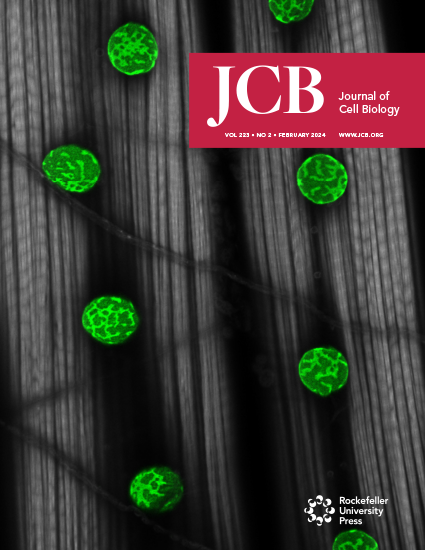Acidosis attenuates the hypoxic stabilization of HIF-1α by activating lysosomal degradation.
IF 6.4
1区 生物学
Q1 CELL BIOLOGY
引用次数: 0
Abstract
Hypoxia-inducible factors (HIFs) mediate cellular responses to low oxygen, notably enhanced fermentation that acidifies poorly perfused tissues and may eventually become more damaging than adaptive. How pH feeds back on hypoxic signaling is unclear but critical to investigate because acidosis and hypoxia are mechanistically coupled in diffusion-limited settings, such as tumors. Here, we examined the pH sensitivity of hypoxic signaling in colorectal cancer cells that can survive acidosis. HIF-1α stabilization under acidotic hypoxia was transient, declining over 48 h. Proteomic analyses identified responses that followed HIF-1α, including canonical HIF targets (e.g., CA9, PDK1), but these did not reflect a proteome-wide downregulation. Enrichment analyses suggested a role for lysosomal degradation. Indeed, HIF-1α destabilization was blocked by inactivating lysosomes, but not proteasome inhibitors. Acidotic hypoxia stimulated lysosomal activity and autophagy via mammalian target of rapamycin complex I (mTORC1), resulting in HIF-1α degradation. This response protects cells from excessive acidification by unchecked fermentation. Thus, alkaline conditions are permissive for at least some aspects of HIF-1α signaling.酸中毒通过激活溶酶体降解来减弱HIF-1α的缺氧稳定性。
缺氧诱导因子(hif)介导细胞对低氧的反应,特别是发酵的增强,使灌注不良的组织酸化,最终可能变得比适应性更有害。pH值如何反馈缺氧信号尚不清楚,但研究酸中毒和缺氧在扩散受限的环境(如肿瘤)中是机械耦合的,因此至关重要。在这里,我们检测了酸中毒存活的结直肠癌细胞中缺氧信号的pH敏感性。HIF-1α在酸性缺氧下的稳定是短暂的,在48小时内下降。蛋白质组学分析确定了HIF-1α之后的反应,包括典型的HIF靶点(例如CA9, PDK1),但这些并不反映蛋白质组范围的下调。富集分析表明它与溶酶体降解有关。事实上,HIF-1α的失稳可以通过溶酶体失活而不是蛋白酶体抑制剂来阻断。酸性缺氧通过哺乳动物雷帕霉素靶蛋白I (mTORC1)刺激溶酶体活性和自噬,导致HIF-1α降解。这种反应保护细胞免受未经检查的发酵造成的过度酸化。因此,碱性条件至少对HIF-1α信号的某些方面是允许的。
本文章由计算机程序翻译,如有差异,请以英文原文为准。
求助全文
约1分钟内获得全文
求助全文
来源期刊

Journal of Cell Biology
生物-细胞生物学
CiteScore
12.60
自引率
2.60%
发文量
213
审稿时长
1 months
期刊介绍:
The Journal of Cell Biology (JCB) is a comprehensive journal dedicated to publishing original discoveries across all realms of cell biology. We invite papers presenting novel cellular or molecular advancements in various domains of basic cell biology, along with applied cell biology research in diverse systems such as immunology, neurobiology, metabolism, virology, developmental biology, and plant biology. We enthusiastically welcome submissions showcasing significant findings of interest to cell biologists, irrespective of the experimental approach.
 求助内容:
求助内容: 应助结果提醒方式:
应助结果提醒方式:


